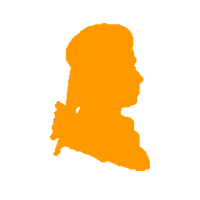Taken from my Musescore account
Taken from French suites - 6 Petites Suites - edited by
Franklin Taylor Augener's edition No. 8021 published
1914.
The ornaments are labelled by letters. Originally the
letters were used in the music of the edition to link
to this table.
Franklin Taylor's Preface to the edition is as
follows
"Comparison of the many existing editions of Bach's
works reveals a very considerable amount of divergence,
both as to the notation, and es...(+)
Taken from my Musescore account
Taken from French suites - 6 Petites Suites - edited by
Franklin Taylor Augener's edition No. 8021 published
1914.
The ornaments are labelled by letters. Originally the
letters were used in the music of the edition to link
to this table.
Franklin Taylor's Preface to the edition is as
follows
"Comparison of the many existing editions of Bach's
works reveals a very considerable amount of divergence,
both as to the notation, and especially in regard to
the numerous ornaments. In these circumstances the only
possible course is to endeavour to choose those forms
which appear to be most in agreement with the
Composer's usual methods, and which carry some measure
of authority. For the result the Editor must be
responsible.
"As regards the matter of performance, the aims of this
edition are, in the first place, accuracy of notes, and
secondly, increase facility of reading, and
consequently of execution, achieved by means of a
carefully considered scheme of fingering, in which,
with very rare exceptions, all notes belonging to the
right hand are written on the upper stave, those for
the left hand being confined to the lower one.
"The original signs for the ornaments have been
retained, and no attempt is made to translate them into
modern forms. Reference to the Table of Ornaments at
the beginning of the book will show the manner of their
proper execution in each case."
This sheet music has been placed in the public domain
by the typesetter. The Work may be freely reproduced,
distributed, transmitted, used, modified, built upon,
or otherwise exploited by anyone for any purpose,
commercial or non-commercial, and in any way, including
by methods that have not yet been invented or
conceived.
When a work is in the public domain, it is free for use
by anyone for any purpose without restriction under
copyright law. Public domain is the purest form of
open/free, since no one owns or controls the material
in any way.

 Brigham, James (1975 - )
Brigham, James (1975 - )





